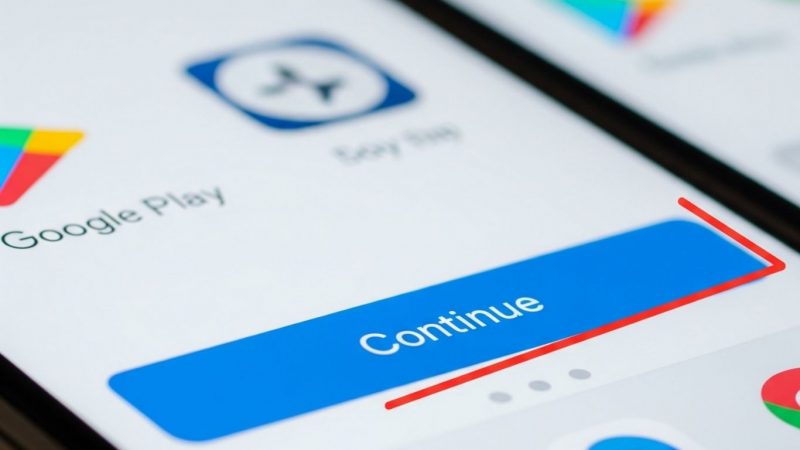7 Quick and Easy Ways to Reduce your Bounce Rate
There are many reasons people might bounce away from your website, but fortunately, there are seven quick and easy ways to reduce the number of people doing so.
Indeed, page load speed is a significant factor in reducing bounce rates. It has been reported that slow page speeds can result in up to an 18% increase in site abandonment, while fast speed can decrease it by up to 40%. People expect web pages to be quick for them on their device-websites should provide them with this experience at all times and for that, you need excellent web development services by an experienced web development company.
- Introduction
- What is a bounce rate?
- Why does your bounce rate matter?
- The 7 Easy Ways to Reduce your Bounce Rate
- Why Are Bounce Rates Important?
- How do I Improve My Bounce Rate?
- Closing thoughts
1. Introduction:
This blog looks at seven ways to reduce your bounce rate, one of the most critical metrics in Google Analytics. A high bounce rate means that users are leaving your website immediately after arriving on it for the first time (and if they’re doing this, then they won’t be around to hit that ‘share’ button or leave a comment). On the other hand, a low bounce rate shows that people engage with your content and stick around a little bit longer.
2. What is a bounce rate?
A bounce happens when someone visits your website and leaves without interacting with any pages on it. They don’t click through to any of your internal pages, they don’t view another page within 2 minutes (the amount of time Google Analytics uses to classify a visit as a bounce), and they don’t stay on your website for more than 30 minutes (which is how long Google Analytics considers someone to be ‘actively’ on the site).
The bounce rate is the percentage of total visits that leave your website immediately after arriving on it. You can view this number in Google Analytics under Behavior > Site Content > All Pages. The bounce rate is calculated based on the total number of visits divided by page views.
3. Why does your bounce rate matter?
You need to have a sound understanding of what a high bounce rate indicates to take action against it. A high bounce rate means that new visitors find your site inaccessible, tedious, challenging to navigate, or irrelevant. This can be for a number of reasons, but the data highlights the main issues.
Bounce rate is a crucial metric for SEO. It is one of the most significant indicators of how easy your site is to use and what you need to improve. Small changes can significantly impact your site’s performance in organic search, particularly if you care about conversion rates.
A high bounce rate can also affect your site’s rankings – both in web and organic searches – and reduce your traffic. These visitors may come back to your site again, but they’re no longer new and, therefore, will not influence your rankings.
4. The 7 Easy Ways to Reduce your Bounce Rate
Here are seven quick ways to reduce bounce rates:
Optimize Mobile Page Performance
In a nutshell, this is about making sure that what you deliver is as user-friendly as possible for those people who access it through their mobile devices. Even if you have a responsive website, it’s still vital to test whether its conversion rates benefit from changes.
Optimize your Page Title
Page title tags act as the first line of content on your website. They are used to describe the material on that page, but they also act as a “hint” of what is to come. If you have good quality page titles, people will be more likely to stay on your site longer.
We can’t emphasize enough how important it is for you to ensure that your page titles are clearly descriptive and helpful to the user. A high bounce rate indicates that users are not finding what they’re looking for on your site, which means that they want to leave it sooner rather than later.
Make sure that your site is mobile-friendly
If your website is not mobile-friendly, then users will leave in a flash when they get to the site. After spending so much time on their phones, it’s no surprise when they see pages full of text and images.
If you don’t have a responsive site, you should at least add Mobile Page Title tags to your pages. You can easily add them in Google Webmaster Tools by clicking the “Add an h1/h2/h3 for mobile” link under “Site information.”
Update your content regularly
You must focus on being as relevant as possible with the content on your site. If you’re not, then people will leave as soon as they arrive at your location. This is why you must update your content regularly.
Reduce the amount of clutter on your site
Each page of your website needs to be unique in some way. Keeping this in mind, make sure that each page has a clear and noticeable purpose. You can best achieve this by reducing the amount of clutter on each page, including images and text.
Create an appealing layout
Your site’s layout is important for helping people navigate your content. If you have a not appealing layout, then users are likely to leave your site immediately upon arriving on it.
To create an appealing layout, you need to follow Google’s Webmaster Guidelines by making sure that your page titles are clear, concise, and descriptive. For example, make sure that each page has its unique role in the overall flow of the website.
Tag your pages correctly in Google Analytics
Google Analytics tags your pages with ‘conversion tags.’ This means that you can use these tags to track when visitors have completed specific tasks on your site. You must make sure that you tag all relevant pages in Google Analytics with the right conversion tags.
Page titles are highly impactful when it comes to Google Analytics. According to research conducted by Webtrends, a page title with a high amount of natural language increases conversions.
We also found that having relevant page titles can be highly effective at enticing people to stay on your site for an extended period of time (and hopefully convert). The majority (61%) stated that giving more information in the page title improved their conversion rate, followed by 33% who said they clicked through because of the “information” they received.
5. Why Are Bounce Rates Important?
Bounce rates help you understand how users react to the content on your site. It also enables you to see how quickly users are becoming engaged with your brand name. As a result, bounce rates can indicate how compelling your calls-to-action are at enticing people to engage with you further.
If people are clicking around on your site, then this means that they’re interested in what you have to offer. It also means that there’s an opportunity for you to interact with them by tracking their actions and interactions to find out what they’re looking for.
Bounce rate is advantageous because it clarifies how visitors behave on your website differently depending on the page they arrive from. For example, if users are quickly leaving the “About Us” page, it’s probably because they’re not interested in that subject.
On the other hand, if users are leaving the “Contact Us” page quickly (which is usually where people end up after first visiting your site), then this is an area you should be trying to improve.
6. How do I Improve My Bounce Rate?
As we’ve said repeatedly, bounce rate is all about user experience. The more effective your site meets your customer’s needs, the lower your bounce rate will be. You can hire an expert web development company like Groovy Web to help you with your bounce rate issues. We are a team of expert WEB DEVELOPERS, DESIGNERS and MARKETERS specialized in SEO OPTIMIZATION & MOBILE APP DEVELOPERS.
We know how important this metric is for you. That’s why we’re here to help you improve.
7. Closing Thoughts:
It’s important to note that some bounce rate is natural. After all, it’s human nature to be curious. If you pay attention, you’ll see that how people react to content on your site is mainly dependent on their emotions. While bounce rate is useful for analyzing user behavior, it shouldn’t be the only metric you pay attention to. To improve your bounce rate we would recommend you hire experienced website developers to develop your website.
Author Bio: Haasim is very passionate about blogging, SEO, and he loves to help people in knowing the best digital solutions. He always tries to learn new and exciting things every day as the Internet gives the power to explore the whole world in a totally new and efficient way.






